Is it safe to drink boiled water in Mexico? The answer is nuanced, but generally, no, it’s not entirely safe to drink boiled tap water in Mexico. While boiling kills bacteria, it doesn’t remove minerals and other contaminants. For LGBTQ+ travelers exploring Mexico’s vibrant culture, including destinations like Puerto Vallarta and Mexico City, gaymexico.net offers essential safety tips and local insights to ensure a worry-free experience. Embrace the adventure with confidence, knowing how to stay healthy and hydrated in this beautiful country, with a guide on water safety and access to LGBTQ+ events and community connections.
1. Frequently Asked Questions (FAQs) About Drinking Water In Mexico
1.1 Can You Drink Tap Water in Mexico?
No, you cannot drink unfiltered tap water in Mexico. The local water supply is not considered safe for consumption due to potential contamination.
The tap water in Mexico often contains bacteria, viruses, and parasites that can cause gastrointestinal illnesses. According to the Centers for Disease Control and Prevention (CDC), travelers should avoid drinking tap water in Mexico. Everyone, including locals, typically drinks bottled or filtered water. This precaution is crucial for all travelers, particularly for the LGBTQ+ community exploring Mexico, as it ensures a healthy and enjoyable experience.
1.2 What is Montezuma’s Revenge?
Montezuma’s Revenge is the colloquial name for traveler’s diarrhea in Mexico. It refers to gastrointestinal distress caused by consuming contaminated food or water.
Traveler’s diarrhea is contracted from food or water containing pathogens unfamiliar to your digestive system. Symptoms can include diarrhea, abdominal cramps, nausea, and fever. The World Health Organization (WHO) notes that traveler’s diarrhea affects a significant percentage of international travelers. To avoid Montezuma’s Revenge, stick to bottled or purified water and be cautious about where you eat. This is especially important for LGBTQ+ travelers who want to fully enjoy their time exploring Mexico’s diverse cities and cultural sites.
1.3 Do Locals Drink Tap Water in Mexico?
Most locals refrain from drinking tap water in Mexico. They primarily consume bottled or filtered water to avoid potential health issues.
Many Mexicans are aware of the risks associated with tap water, including water-borne bacteria and high mineral content. According to a survey conducted by the Mexican government, a significant percentage of households use bottled or purified water as their primary source of drinking water. For travelers, it’s always best to follow the lead of the locals and opt for safer alternatives.
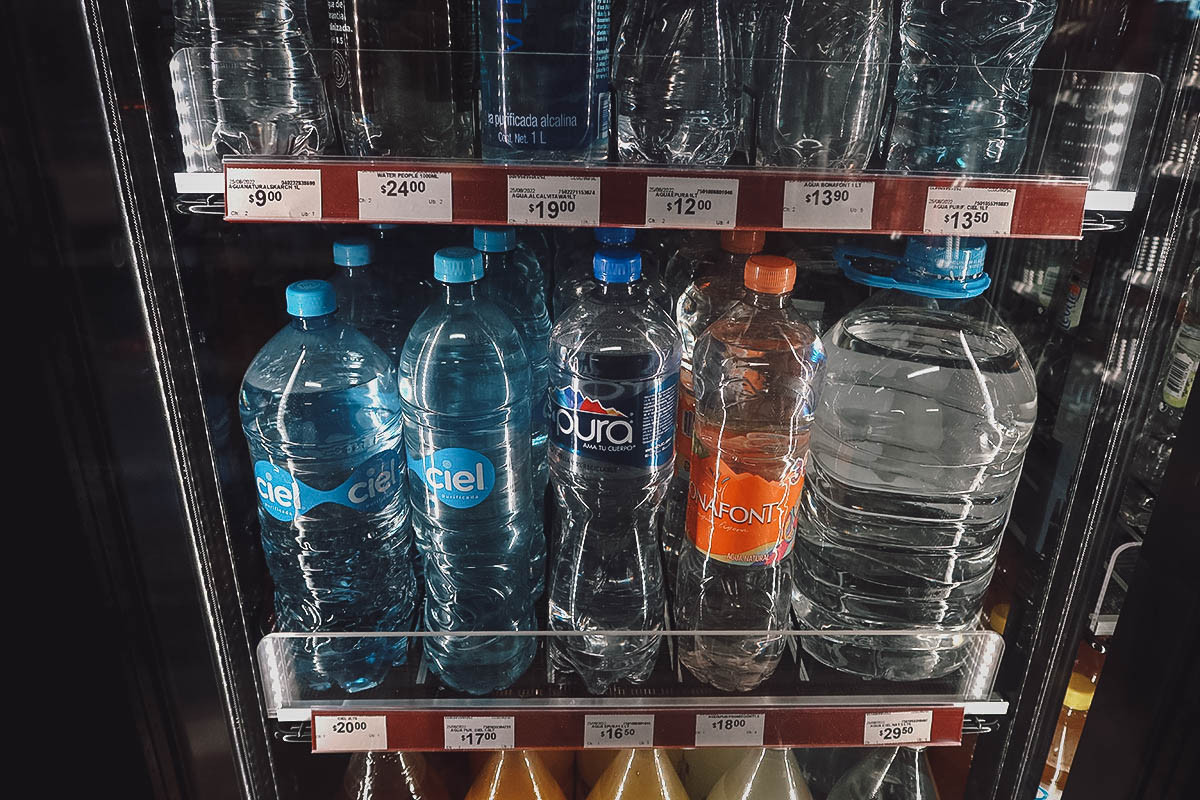 Bottled Water Variety at a Mexican Store
Bottled Water Variety at a Mexican Store
1.4 Is it Safe to Drink Boiled Water in Mexico?
No, it is not safe to drink boiled tap water in Mexico. While boiling water can kill bacteria and viruses, it does not remove harmful minerals or chemical contaminants.
Boiling tap water in Mexico can reduce the risk of bacterial infections, it won’t eliminate hard minerals and other contaminants that can be harmful over time. These minerals can accumulate and potentially cause health issues. It’s advisable to use bottled or filtered water for drinking and cooking. LGBTQ+ travelers should especially take note of this to maintain their health while enjoying Mexico’s attractions.
1.5 Is it Safe to Drink Filtered/Purified Water in Mexico?
Yes, consuming filtered or purified water in Mexico is generally safe. These methods remove most harmful contaminants, making the water safer to drink.
Filtered water systems, like those using activated carbon filters, can effectively remove sediments, chemicals, and other impurities from tap water. Purified water undergoes a more rigorous process, such as reverse osmosis or distillation, to eliminate virtually all contaminants. The U.S. Environmental Protection Agency (EPA) provides guidelines for water purification methods, ensuring that these processes meet safety standards.
Before your trip, you can purchase the SurviMate water bottles through Amazon (affiliate link). It’s a portable water bottle that courses tap water through a filter each time you take a sip.
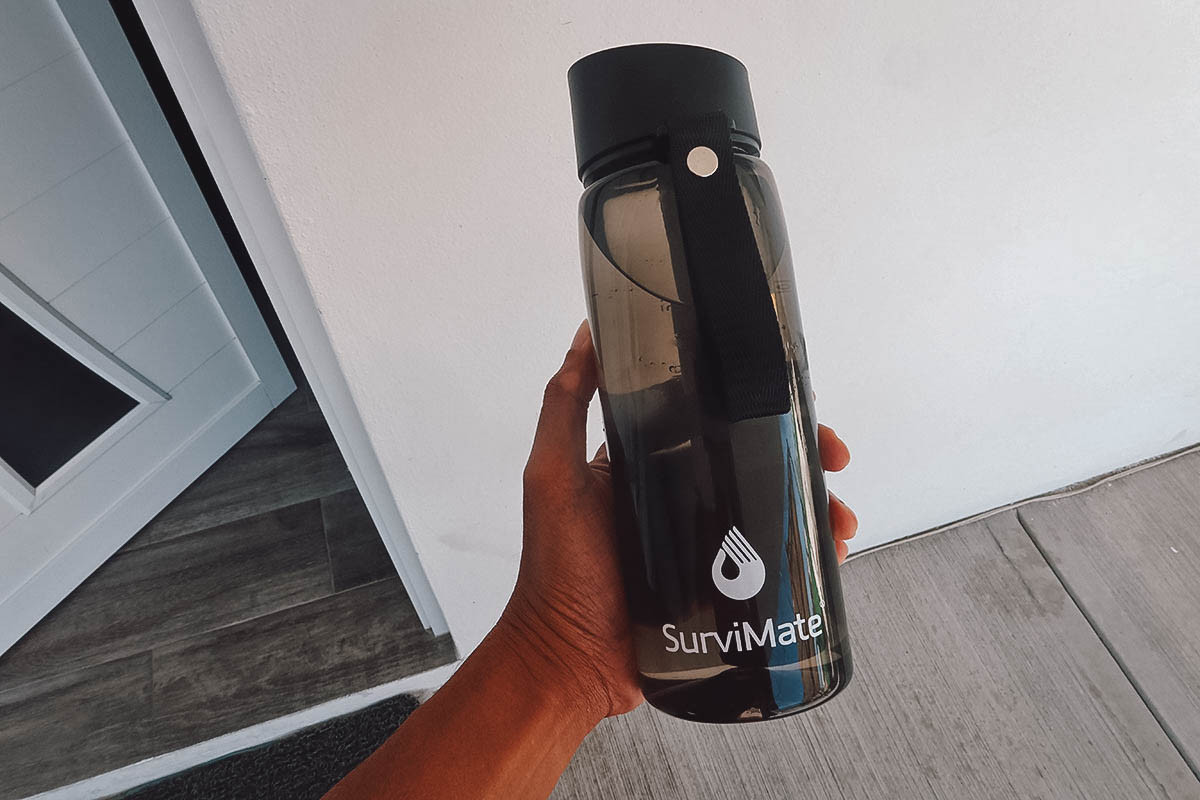 Travel Water Bottle with Filter for Mexico
Travel Water Bottle with Filter for Mexico
1.6 Which Bottled Water is Best in Mexico?
The specific brand of bottled water in Mexico does not significantly matter as long as it is sealed and purchased from reputable stores. Common and reliable brands include Epura, Bonafont, and Ciel.
These brands undergo purification processes to ensure the water is safe for consumption. Prices are usually similar among these brands. Buying from well-known stores like Oxxo or major grocery chains reduces the risk of purchasing counterfeit or improperly stored products.
1.7 Is it Safe to Drink Tap Water at a Hotel or Resort in Mexico?
No, it is generally not safe to drink tap water at hotels or resorts in Mexico unless explicitly stated otherwise. Most establishments provide bottled water for guests due to concerns about water quality.
Some high-end resorts may have advanced water filtration systems, but it’s always best to confirm with the hotel staff if the tap water is safe to drink. To avoid any risk, stick to bottled water for drinking and brushing your teeth. This is a simple precaution that can help you stay healthy and enjoy your vacation.
1.8 Is Ice Safe in Mexico?
Ice in Mexico is generally safe because it is typically made with purified water. Most establishments avoid using tap water for ice production.
Restaurants and bars usually use commercially produced ice made from purified water. This practice minimizes the risk of contamination. However, if you have concerns, you can always request drinks without ice. This caution can provide extra peace of mind while you enjoy your trip.
1.9 Is Coffee Safe in Mexico?
Yes, coffee is safe to drink in Mexico. It is typically made with purified water, ensuring it is free from harmful contaminants.
Coffee shops and restaurants use purified water for brewing coffee, similar to how they produce ice. This makes coffee a safe and enjoyable beverage option. If you’re a coffee lover, you can indulge without worry.
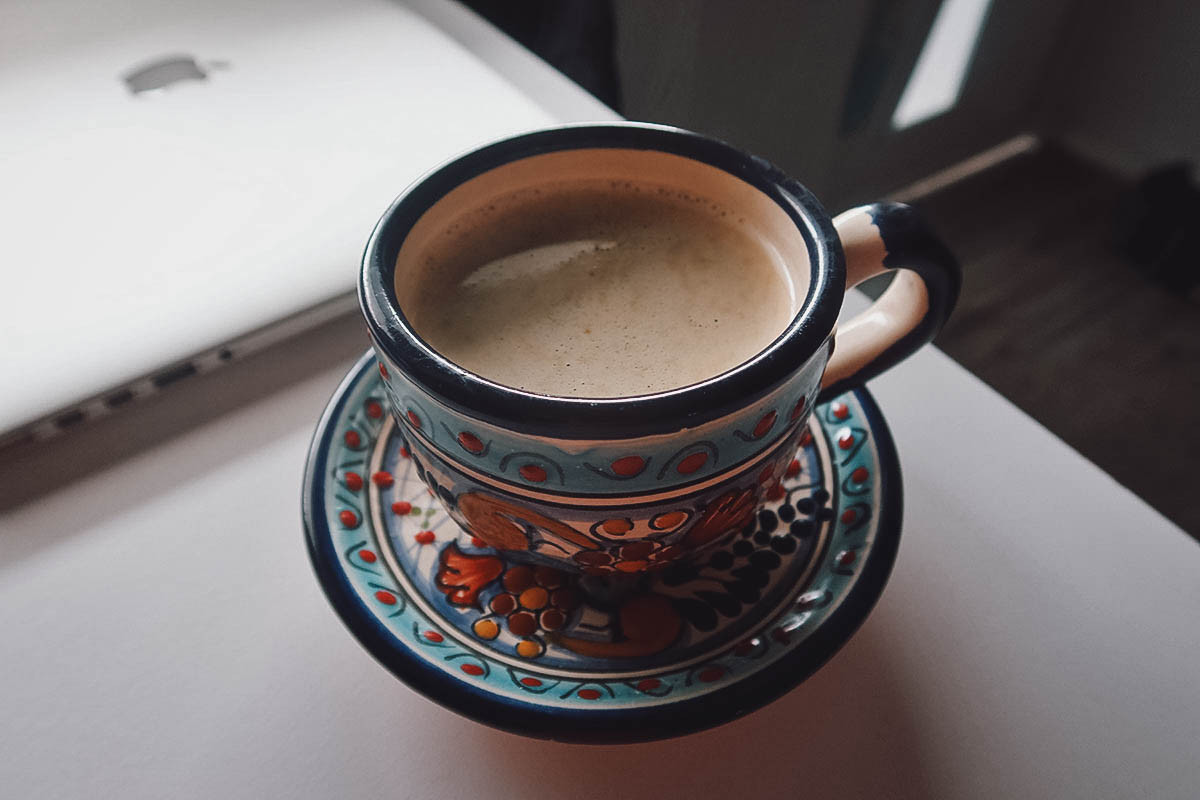 Mexican Coffee Cup
Mexican Coffee Cup
1.10 Are Aguas Frescas Safe in Mexico?
Aguas frescas, non-alcoholic beverages made from fruits, flowers, or seeds mixed with water and sugar, are generally safe to drink in Mexico because they are made with purified water.
These refreshing drinks are a staple in Mexican cuisine and are prepared with the same precautions as other water-based beverages. You can confidently enjoy aguas frescas at most restaurants and street food stalls. Tamarindo (tamarind) and maracuya (passionfruit) are popular flavors.
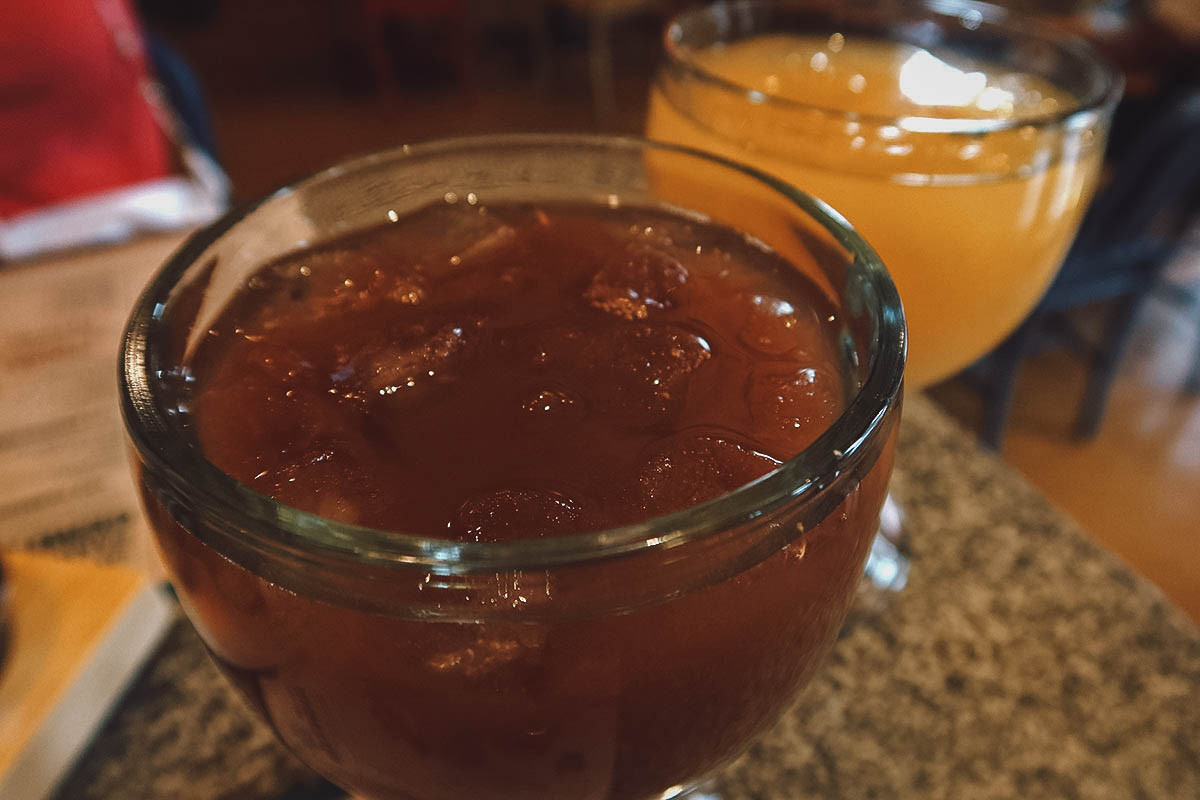 Tamarind and Passion Fruit Aguas Frescas
Tamarind and Passion Fruit Aguas Frescas
1.11 Can you Brush Your Teeth with Tap Water in Mexico?
Yes, it is generally safe to brush your teeth with tap water in Mexico as long as you avoid swallowing the water.
Brief exposure to tap water while brushing your teeth is unlikely to cause illness. However, if you prefer to be extra cautious, you can use bottled water. This simple step can alleviate any concerns.
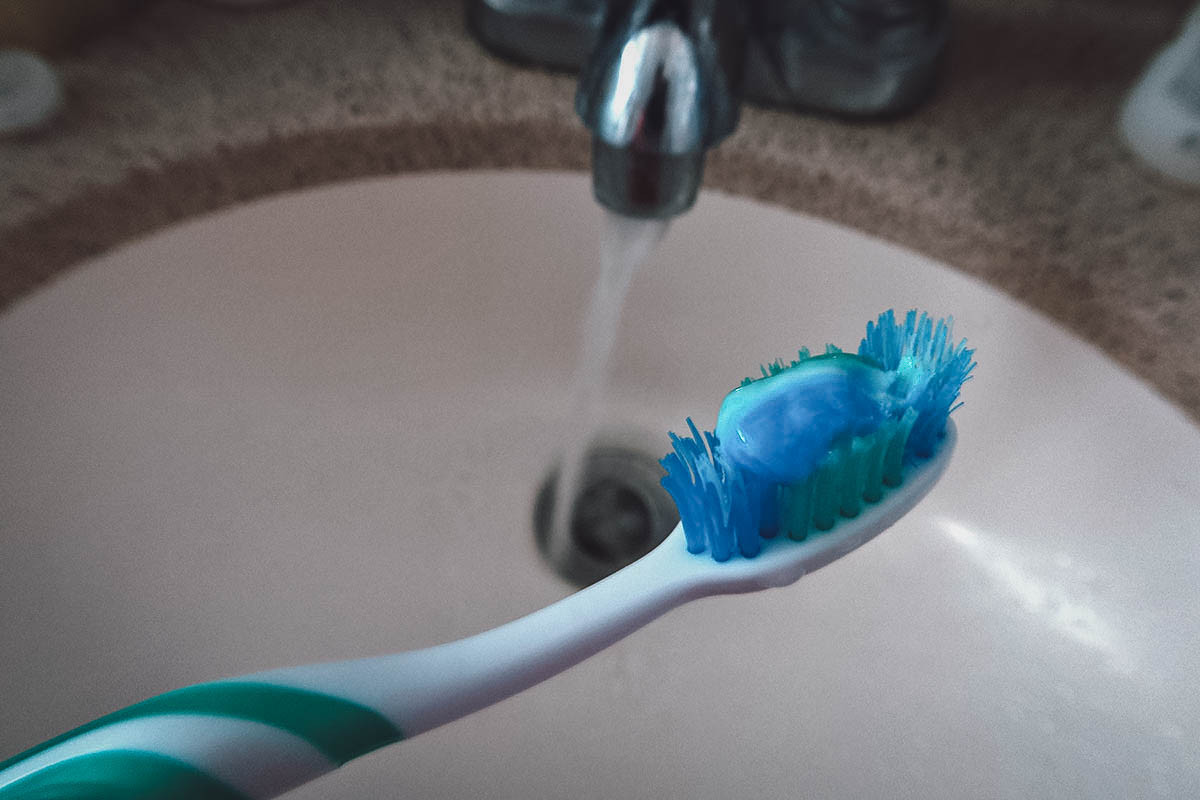 Brushing Teeth in Mexico
Brushing Teeth in Mexico
1.12 Can you Shower with Tap Water in Mexico?
Yes, it is safe to shower with tap water in Mexico. The water is treated, and you are not ingesting it.
Showering with tap water poses little to no health risk. Unless you are drinking the shower water, there is no need for concern. Enjoy your shower without worry.
 Shower in Mexico
Shower in Mexico
2. Safe Drinking Water Tips for LGBTQ+ Travelers in Mexico
For LGBTQ+ travelers, ensuring access to safe drinking water is essential for a healthy and enjoyable trip. Here are some practical tips to stay hydrated and healthy while exploring Mexico.
2.1 Stick to Bottled Water
Always opt for bottled water from reputable brands. Ensure the bottle is sealed before consumption to avoid any risk of contamination.
2.2 Check for Water Dispensers
Many hotels and Airbnbs provide water dispensers with purified water. Take advantage of these resources to refill your water bottles.
2.3 Use Water Purifying Bottles
Consider bringing a water bottle with a built-in filter to purify tap water. This is especially useful for hiking or exploring remote areas.
2.4 Be Cautious with Street Food
When eating street food, ensure the vendor uses purified water for food preparation and drinks. Look for vendors with clean practices and a high turnover of customers.
2.5 Inquire at Restaurants
Ask restaurants about their water source. Most establishments use purified water, but it’s always good to confirm.
2.6 Avoid Ice in Rural Areas
In more rural or less developed areas, it’s best to avoid ice in drinks, as the water source may be less reliable.
2.7 Stay Informed
Keep up-to-date with local health advisories. Local news or your hotel can provide information on any water quality issues.
2.8 Use Bottled Water for Hygiene
Use bottled water for brushing your teeth, especially if you have a sensitive stomach.
2.9 Consider Electrolyte Supplements
If you experience any gastrointestinal issues, electrolyte supplements can help you stay hydrated.
2.10 Research Local Resources
Websites like gaymexico.net provide valuable insights and resources for LGBTQ+ travelers, including tips on staying healthy and safe.
By following these tips, LGBTQ+ travelers can confidently enjoy their trip to Mexico, knowing they are taking the necessary precautions to stay hydrated and healthy.
3. Potential Health Issues from Unsafe Water
Drinking unsafe water can lead to various health problems, ranging from mild discomfort to severe illness. Here are some of the potential issues:
3.1 Traveler’s Diarrhea
Caused by bacteria, viruses, or parasites, leading to symptoms like diarrhea, abdominal cramps, and nausea.
3.2 Giardiasis
An intestinal infection caused by the parasite Giardia, resulting in diarrhea, gas, and stomach cramps.
3.3 Cryptosporidiosis
A parasitic infection causing watery diarrhea, dehydration, and abdominal pain.
3.4 Cholera
A bacterial infection that can cause severe diarrhea and dehydration, potentially life-threatening.
3.5 Hepatitis A
A viral infection affecting the liver, transmitted through contaminated food or water.
3.6 Typhoid Fever
A bacterial infection causing high fever, stomach pain, and potential complications if untreated.
3.7 Dysentery
An infection of the intestines causing diarrhea containing blood and mucus.
3.8 Heavy Metal Poisoning
Long-term consumption of water contaminated with heavy metals can lead to neurological and kidney damage.
3.9 Chemical Contamination
Exposure to industrial or agricultural chemicals in the water supply can cause various health issues.
3.10 Weakened Immune System
Frequent gastrointestinal infections can weaken the immune system, making you more susceptible to other illnesses.
4. Understanding Water Purification Methods
Various methods can purify water, each with its advantages and disadvantages. Here’s an overview:
4.1 Boiling
Heating water to a rolling boil for at least one minute kills most bacteria and viruses.
4.2 Filtration
Using filters to remove sediments, bacteria, and parasites. Filters can range from simple pitchers to sophisticated whole-house systems.
4.3 Chemical Treatment
Adding chlorine or iodine to kill bacteria and viruses. Follow product instructions carefully for dosage.
4.4 UV Purification
Using ultraviolet light to kill bacteria and viruses. Portable UV purifiers are available for travelers.
4.5 Reverse Osmosis
A process that removes virtually all contaminants by forcing water through a semi-permeable membrane.
4.6 Distillation
Boiling water and collecting the steam, which is then condensed back into liquid form, leaving contaminants behind.
4.7 Water Purification Tablets
Small tablets that release chlorine or iodine to disinfect water. Convenient for travel.
4.8 Portable Water Filters
Compact filters that can be used to filter water directly from a tap or stream.
4.9 Solar Disinfection
Placing water in clear plastic bottles and leaving them in direct sunlight for at least six hours to kill pathogens.
4.10 Flocculation and Sedimentation
Adding chemicals to cause particles to clump together and settle, making it easier to filter the water.
5. Navigating Mexico as an LGBTQ+ Traveler
Mexico is increasingly welcoming to LGBTQ+ travelers, but it’s essential to be aware of local customs and laws. Here’s what you need to know:
5.1 Legal Protections
Mexico has made significant strides in LGBTQ+ rights, including legalizing same-sex marriage nationwide.
5.2 Welcoming Destinations
Cities like Puerto Vallarta, Mexico City, and Cancun are known for their vibrant LGBTQ+ scenes.
5.3 Local Customs
While major cities are generally accepting, attitudes may vary in more rural areas. Be mindful of local customs and traditions.
5.4 Safety Tips
Stay aware of your surroundings and avoid displaying overt affection in conservative areas.
5.5 Community Resources
Connect with local LGBTQ+ organizations for support and information.
5.6 Cultural Sensitivity
Learn about Mexican culture and traditions to show respect and understanding.
5.7 Language Basics
Knowing basic Spanish phrases can help you navigate situations and communicate effectively.
5.8 Accommodation Choices
Choose LGBTQ+-friendly hotels and accommodations for a more comfortable stay.
5.9 Event Planning
Plan your trip around LGBTQ+ events and festivals for a more immersive experience.
5.10 Online Resources
Use websites like gaymexico.net to find LGBTQ+-friendly establishments and resources.
6. Recommended LGBTQ+ Friendly Destinations in Mexico
Mexico offers a variety of destinations that are particularly welcoming to LGBTQ+ travelers. Here are a few standout locations:
6.1 Puerto Vallarta
Known as the “gay beach capital of Mexico,” Puerto Vallarta boasts a thriving LGBTQ+ scene with numerous bars, clubs, and resorts.
6.2 Mexico City
The capital offers a diverse and inclusive environment with a vibrant nightlife and cultural attractions.
6.3 Cancun
While known for its beaches and resorts, Cancun also has a growing LGBTQ+ scene with gay-friendly establishments.
6.4 Guadalajara
Mexico’s second-largest city offers a rich cultural experience and a welcoming atmosphere for LGBTQ+ travelers.
6.5 Tulum
Known for its beautiful beaches and Mayan ruins, Tulum is becoming increasingly popular among LGBTQ+ visitors.
6.6 Playa del Carmen
A popular beach destination with a relaxed vibe and a growing number of LGBTQ+-friendly businesses.
6.7 San Miguel de Allende
A charming colonial town with a thriving arts scene and a welcoming community.
6.8 Oaxaca
Known for its indigenous culture and cuisine, Oaxaca offers a unique and inclusive travel experience.
6.9 Merida
The capital of Yucatan, Merida, offers a rich cultural heritage and a growing LGBTQ+ community.
6.10 Huatulco
A quieter beach destination with a laid-back atmosphere and a welcoming environment.
7. Staying Connected with gaymexico.net
For LGBTQ+ travelers planning a trip to Mexico, gaymexico.net is an invaluable resource. Here’s how it can help:
7.1 Comprehensive Guides
Find detailed guides to LGBTQ+-friendly destinations, including Puerto Vallarta, Mexico City, and Cancun.
7.2 Event Listings
Stay up-to-date with the latest LGBTQ+ events, festivals, and parties happening across Mexico.
7.3 Accommodation Recommendations
Discover LGBTQ+-friendly hotels, resorts, and guesthouses for a comfortable and welcoming stay.
7.4 Local Insights
Get insider tips from locals on the best places to visit, eat, and explore.
7.5 Safety Information
Access essential safety tips and advice for LGBTQ+ travelers in Mexico.
7.6 Community Forums
Connect with other LGBTQ+ travelers and share your experiences and recommendations.
7.7 Cultural Awareness
Learn about Mexican culture and traditions to show respect and understanding.
7.8 Legal Updates
Stay informed about the latest LGBTQ+ rights and laws in Mexico.
7.9 Support Resources
Find information on local LGBTQ+ organizations and support services.
7.10 Travel Tips
Get practical travel tips and advice for planning your trip, from transportation to currency exchange.
8. Essential Packing List for a Trip to Mexico
Packing appropriately can make your trip to Mexico more comfortable and enjoyable. Here’s a list of essentials:
8.1 Sunscreen
Protect your skin from the strong Mexican sun with a high SPF sunscreen.
8.2 Insect Repellent
Keep mosquitoes and other insects at bay with a good insect repellent.
8.3 Water Bottle
Stay hydrated by carrying a reusable water bottle that you can refill with purified water.
8.4 Medications
Bring any prescription medications you need, along with a copy of your prescription.
8.5 First-Aid Kit
Pack a basic first-aid kit with essentials like band-aids, antiseptic wipes, and pain relievers.
8.6 Comfortable Shoes
You’ll be doing a lot of walking, so bring comfortable shoes.
8.7 Lightweight Clothing
Pack lightweight, breathable clothing suitable for warm weather.
8.8 Swimsuit
Don’t forget your swimsuit for enjoying Mexico’s beautiful beaches and pools.
8.9 Adapter
If your electronics use a different voltage, bring a power adapter.
8.10 Travel Insurance
Ensure you have travel insurance to cover any unexpected medical expenses or emergencies.
9. Mexican Cuisine: What to Eat and Drink Safely
Mexican cuisine is a highlight of any trip to Mexico. Here’s how to enjoy it safely:
9.1 Street Food
Choose vendors with clean practices and high customer turnover.
9.2 Cooked Foods
Opt for foods that are freshly cooked and served hot.
9.3 Fruits and Vegetables
Wash fruits and vegetables with purified water before eating.
9.4 Aguas Frescas
Enjoy aguas frescas from reputable establishments.
9.5 Coffee
Coffee is generally safe as it is made with purified water.
9.6 Ice
Ice is usually safe, but avoid it in rural areas.
9.7 Dairy Products
Be cautious with unpasteurized dairy products.
9.8 Seafood
Ensure seafood is fresh and properly cooked.
9.9 Local Specialties
Try local specialties, but ask about the ingredients and preparation methods.
9.10 Reputable Restaurants
Dine at reputable restaurants with good hygiene standards.
10. Phrases for LGBTQ+ Travelers in Mexico
Knowing a few basic Spanish phrases can enhance your travel experience and help you navigate various situations. Here are some useful phrases for LGBTQ+ travelers:
10.1 Greetings
- Hola: Hello
- Buenos días: Good morning
- Buenas tardes: Good afternoon
- Buenas noches: Good evening/night
10.2 Basic Phrases
- Por favor: Please
- Gracias: Thank you
- De nada: You’re welcome
- Sí: Yes
- No: No
- ¿Cómo está?: How are you?
- Bien, gracias: Good, thank you
- ¿Cuánto cuesta?: How much does it cost?
- No entiendo: I don’t understand
- ¿Habla inglés?: Do you speak English?
10.3 LGBTQ+-Specific Phrases
- Soy gay/lesbiana/bisexual: I am gay/lesbian/bisexual
- ¿Es este un lugar amigable para LGBTQ+?: Is this an LGBTQ+-friendly place?
- ¿Dónde puedo encontrar un bar gay?: Where can I find a gay bar?
- Estamos de vacaciones: We are on vacation
- Somos pareja: We are a couple
- ¿Hay eventos LGBTQ+ cerca?: Are there any LGBTQ+ events nearby?
10.4 Emergency Phrases
- Ayuda: Help
- ¡Socorro!: Help!
- Necesito un médico: I need a doctor
- Emergencia: Emergency
- Llame a la policía: Call the police
10.5 Polite Requests
- ¿Puede ayudarme?: Can you help me?
- ¿Dónde está el baño?: Where is the bathroom?
- ¿Me puede dar agua purificada, por favor?: Can you give me purified water, please?
- ¿Me puede recomendar un buen restaurante?: Can you recommend a good restaurant?
Final Thoughts on Drinking Water in Mexico
Staying informed and taking simple precautions can ensure that you enjoy your trip to Mexico without worrying about water safety. By sticking to bottled or purified water, being mindful of where you eat, and utilizing resources like gaymexico.net, you can have a safe, healthy, and unforgettable experience exploring all that Mexico has to offer.
Are you ready to explore Mexico with confidence? Visit gaymexico.net today to discover LGBTQ+-friendly destinations, events, and community connections that will make your trip truly special! Address: 3255 Wilshire Blvd, Los Angeles, CA 90010, United States. Phone: +1 (213) 380-2177.